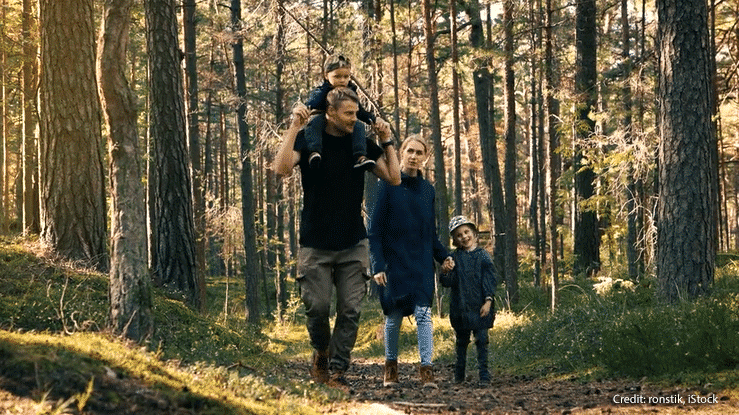
Jun 10, 2024 Nature and Health, A Walk in the Park
The Covid pandemic had a widespread social impact in addition to its effects on public health. For example, in the Washington, DC area, home buyers were focused on homes in the city pre-COVID, and the Washington suburban real estate market was in the doldrums. However, after the pandemic, home buyers began looking for properties that had more room outdoors, and the suburban real estate market reversed course as people focused on having greater access to Nature rather than shorter commutes and the other advantages of an urban lifestyle.
The impact of COVID-19 on overt public health, including infection rates, human morbidity, and mortality (over 555,000 deaths in the USA), is well-known. Various media stories have also described how wild animals benefited from the impact on human behavior and moved into areas where human activity was reduced. In 2021, a study examined the effects of green space access on COVID-19 infection rates, morbidity, and mortality. The study used county values of the Normalized Difference Vegetation Index (NDVI) to quantify county-by-county access to green space. The NDVI is calculated using satellite imagery and ranges from 0 (no greenery – e.g., in urban centers) to 1 (e.g., summer values for areas with complete coverage by live green vegetation). The study incorporated many parameters, including county population density, the proportion of black residents, air pollution values, and median home value.
The study reported that an increase of 0.1 in the NDVI was associated with a 6% decrease in the COVID-19 incidence rate after adjusting for many possible confounding factors. Towards the end of 2021, a second study tracked COVID-19 incidence and NDVI values but at a finer resolution than the county metrics. This study confirmed the earlier results and reported higher COVID-19 infection rates in communities of color with reduced access to green spaces at a zip-code resolution. There was a 4.1% decline in COVID-19 incidence rates for every 0.1 increase in NDVI values.
The second study commented on possible mechanisms that might explain why access to green space could have such an effect on virus infection rates. For example, the activities of an essential set of immune cells in the body that fight viral infections, known as Natural Killer (NK) cells, are reportedly boosted by exposure to Nature and green space. Another study, using data from the US-based Nurses’ Health Study, reported a 12% lower rate of non-accident mortality among women living in homes with the highest amount of greenery within 250 meters of their homes compared to women living in homes with the lowest amount of greenery.
These two reports on COVID-19 incidence and green space are the latest studies reporting on Nature’s somewhat mysterious (in terms of the specific mechanisms) positive impact on organic health. The study of Nature’s impact on health was boosted in 1984 when a paper in Science reported that the view from the hospital room enhanced the speed of a patient’s recovery from gall bladder removal. After the surgery, patients were placed in one of four rooms to recover. Two rooms looked out onto a blank brick wall, and two had a view of trees and a natural setting. Patients in the two rooms with the view of Nature recovered faster and used less analgesia than those with the view of the brick wall.
The importance of access to Nature for public health is emphasized in a recent article by Kazdin, an authority in identifying effective mental health treatments. He notes that most individuals with mental health disorders receive no treatment. He then identifies interventions with a strong evidence base demonstrating effectiveness, readily available in everyday life and preferably free. He suggests three qualifying interventions: physical exercise, contact with Nature, and yoga. While exposure to Nature has low barriers (exemplified by the comment – “it’s a walk in the park” – on how easy a task might be), there are many different components of contact with Nature, and insufficient attention has been given to which components produce the most beneficial impact. Also, the mechanisms underlying the beneficial effects of Nature are, according to Kazdin, “largely unknown.” Nevertheless, as the two articles on COVID-19 indicate, the positive impact of exposure to Nature on physical and mental health is a vibrant and growing research field.


